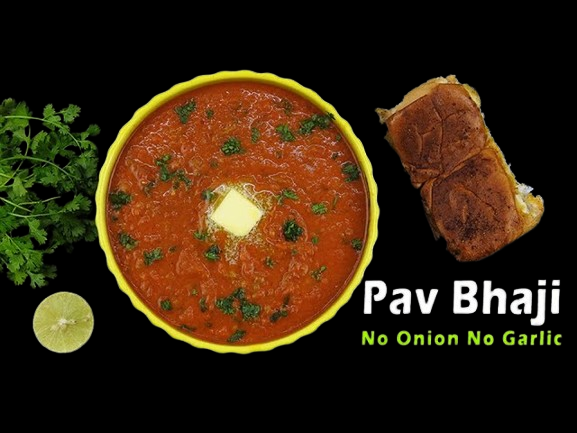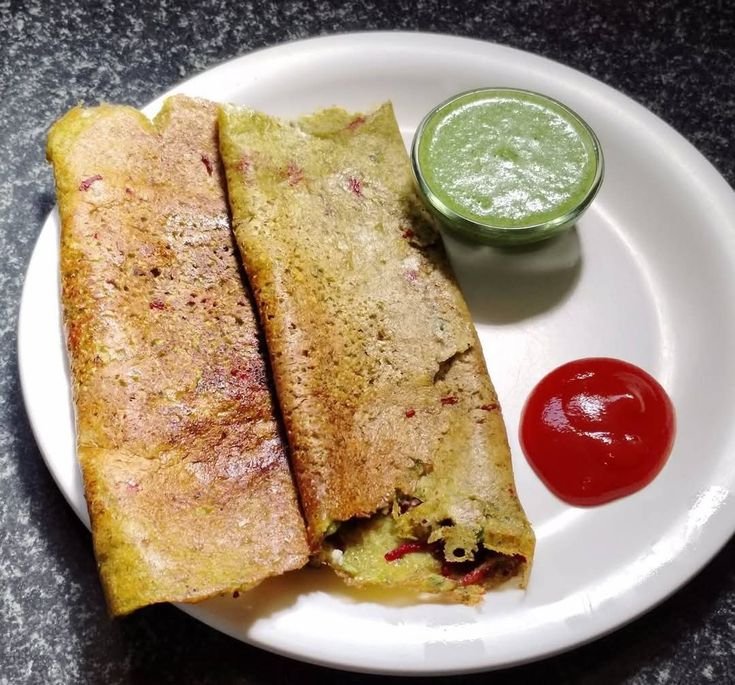
Satvik Style Pav Bhaji – A Soulful Twist on a Classic Favorite
Hare krishna 🙏You know, some recipes just hit different—not because they’re overloaded with butter or spices, but because they carry this quiet comfort, a kind of warmth that lingers. That’s exactly what happened when I made Satvik style Pav Bhaji for the first time. No onion, no garlic, no fancy frills—just pure, mindful cooking with clean, sattvic ingredients. And guess what? It turned out absolutely delicious.
If you’ve grown up loving the spicy, buttery street-style Pav Bhaji like most of us, the idea of making it without onion and garlic might feel like sacrilege. I get it. But hear me out—this version is not only easier on your digestion, it’s genuinely tasty, soothing, and full of flavor that makes you feel good after eating it. Let me tell you all about it.
What is Satvik Food Anyway?
In the simplest words, Satvik food is pure, clean, and balanced. It’s the kind of food that’s easy to digest, nourishing for the body, calming for the mind, and uplifting for the spirit. It’s rooted in Ayurveda and often followed by spiritual practitioners, yogis, or anyone who wants to eat with intention.
It doesn’t include onion, garlic, meat, or any overly spicy or processed ingredients. Instead, it focuses on fresh vegetables, grains, legumes, natural spices, and foods that carry prana—life energy.
Now, Pav Bhaji might not seem like a “satvik” dish on the surface, but with a few tweaks, it totally can be. And once you try it, you’ll be surprised how satisfying it is—without the heavy feeling afterward.
Ingredients You’ll Need
For the Bhaji:
- 2 medium potatoes (boiled and mashed)
- 1 cup cauliflower (chopped into small florets)
- ½ cup carrots (finely chopped)
- ½ cup green peas (fresh or frozen)
- ½ cup capsicum (finely chopped)
- 2 medium ripe tomatoes (finely chopped)
- 1-inch piece fresh ginger (grated)
- 2 green chilies (optional, based on your spice tolerance)
- 1 tsp cumin seeds
- ½ tsp turmeric powder
- 1½ tsp coriander powder
- ½ tsp cumin powder
- 1 tsp kasuri methi (dried fenugreek leaves)
- 1 tsp lemon juice
- 2 tbsp cow ghee (or coconut oil for vegan option)
- Salt to taste
- Fresh coriander for garnish
For the Pav:
- Whole wheat or multigrain pav/buns
- Ghee or butter for toasting
- Optional: a pinch of rock salt and cumin powder for flavoring
How to Make It – Step by Step
1. Prep the Veggies
Start by boiling the potatoes, carrots, cauliflower, and green peas. You can use a pressure cooker or boil them in a pot till soft. Once cooked, mash them lightly—you want a chunky but soft texture.
2. Make the Masala Base
Heat ghee in a thick-bottomed pan. Add cumin seeds and let them sizzle. Toss in the grated ginger and chopped green chilies. After a quick sauté, add the chopped tomatoes.
Let the tomatoes cook down till they turn soft and pulpy. Now add turmeric, coriander powder, and cumin powder. Stir it all together and let the spices cook for a minute or two—this is where the magic begins.
3. Add the Veggies
Now, add the mashed veggies to this masala. Mix everything well and adjust the consistency with a little water if needed. Let it simmer on low flame for about 10 minutes, stirring occasionally.
Sprinkle in the kasuri methi and squeeze in the lemon juice. Taste and adjust salt. Finally, garnish with fresh coriander.
4. Toast the Pav
Slit the pav and toast them on a hot pan with a bit of ghee. If you want to give it a subtle flavor boost, sprinkle a little cumin powder and rock salt while toasting. Trust me, that tiny touch makes a big difference.
Why This Version Feels So Good
What makes this Satvik Pav Bhaji special isn’t just the absence of onion and garlic. It’s the presence of intention. When you cook with fresh vegetables, calming spices, and pure ingredients, it shows in the taste—and in how your body feels afterward.
It’s lighter, cleaner, and more aligned with how our bodies are designed to function. No heaviness, no acidity, no grogginess. Just good, clean food.
Personal Notes & Tips
- If you’re preparing this during a fasting period or Navratri, use sendha namak (rock salt) instead of regular salt.
- The quality of tomatoes really matters here. Since they’re the base of the flavor, go for ripe, juicy ones.
- Want it richer? Add a teaspoon of homemade cashew paste or a splash of coconut milk—it adds creaminess without making it heavy.
- Cooking this meal with devotional music in the background or even just with a calm mind makes a difference. Food carries energy, and your mood while cooking becomes part of the meal.
Serving Suggestions
Serve it with:
- A side of cucumber or carrot salad
- A bowl of buttermilk or tulsi tea
- A gentle squeeze of lemon on top before serving
Trust me, this meal doesn’t just fill your stomach—it nourishes your spirit.
Final Thoughts – Simplicity is the Real Luxury
If there’s one thing I’ve learned from Satvik cooking, it’s that less truly is more. You don’t need dozens of ingredients or heavy seasoning to create flavor. All you need is freshness, balance, and intention.
This Satvik Pav Bhaji is the kind of recipe that brings joy to your table, without any fuss or guilt. It’s humble, comforting, and deeply satisfying—whether you’re cooking for yourself, your family, or as an offering in a more spiritual setting.
So next time you’re craving something flavorful but clean, give this recipe a try. You might just find yourself making it on repeat—just like I do.
And hey, if you try it out, drop a comment or share a picture.



